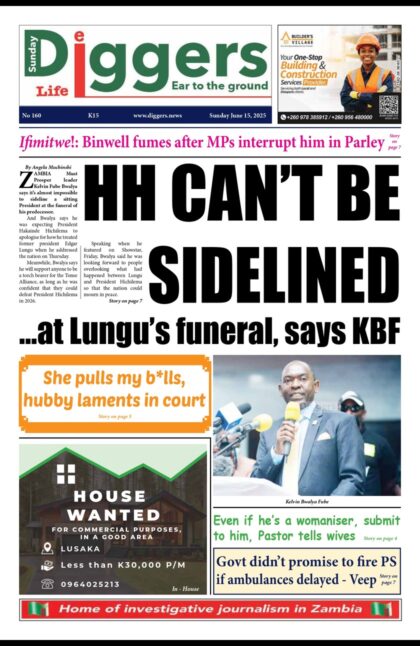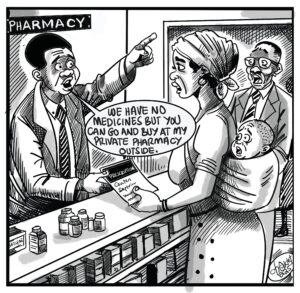In a few weeks time, Zambia will be turning sixty. A good old ripe age. For a man’s equivalent, it is often the age that is associated with one having a well rounded view of life, having dispensed with any identity crises, found answers to existential questions and given up on others. It also comes from a renewed sense of worth and the value of each passing day, while obviously keeping a coy eye on that bulging prostate; the dislocated disc in the back or the knees that now seem to have suddenly become moody. It is also a very good age to reflect on the past and help shape the future. Amidst the fanfare of past independence celebrations, one thing has been missing.
That thing being that exactly sixty years ago, in Chinsali, Northern Zambia, there was bloodletting at a scale never seen before in Zambia and never matched since. What started as mere flexing and light skirmishes between the Lumpa Church and the United National Independence Party (UNIP) erupted into a full-on massacre as thousands of Lumpa Church members were butchered, displaced and raped by so-called UNIP youths, aided in no small part by government machinery through the Northern Rhodesian Army.
For Alice Mulenga Lubusha Lenshina, the venerated Leader of the Lumpa Church and its spiritual compass, these events would lead to her exile, voluntary surrender and finally incarceration. She would later die in 1978, her church having been eviscerated, her followers scattered and her beloved Kamutola Cathedral razed to the ground. Today where once the imposing Cathedral stood, a rectangular tomb stands, housing the remains of Alice Mulenga Lenshina, while gnarled dry skinned women tend to it and narrate at least fifty times in a day, the story of the Lumpa Church to its visitors. Those so moved by the story are encouraged to make a small donation to the “keepers of the shrine”.
At the same time, a weather-beaten headstone with hardly legible Bemba writing, points to the final resting place of hundreds of Lumpa Church members who were buried in a mass grave ironically just behind the Chinsali District Hospital. Numerous others have never been accounted for, most likely having met their fate at the hands of wild animals, the elements, a sharp stick down their throat or a painful slow drowning in any of the many rivers that surrounded Mporokoso, Chinsali, Isoka and Lundazi. Paishuko! They said. There was nothing even remotely resembling shuko.
The newspapers of the day have pictures. Pictures of charred remains of villages and humans. Pictures of “primitive” weapons “recovered” from the Lumpa compounds. Hoes, spears, arrows. What do you expect? Weren’t those common utensils one would find in any place.
What is known from the Lumpa massacre for a long time was drawn from the writings of the colonial masters, keen to show that they did all they could to preserve life. A parliamentary report given by the shadow Minister of Home Affairs, waiting in the wings to be appointed into government, makes mockery of the lives that were lost. He claims these were not people, but devils, who drank their own urine and smeared themselves with human excreta. Yet he conveniently omits the fact that President Kaunda’s own family were members of the Church, with his brother having composed some of the Lumpa hymns.
Yes, President Kaunda. Zambia’s founding president, he himself a descendant of Chinsali. He who once stood, teetering and trembling before a microphone on 25th May 2015 and released Zambia from all manner of curses and broke down all manner of thrones.
If there will be breaking down of thrones, then it must be in acknowledging this part of our history; unsavoury as it is. It will be in admitting and maybe even celebrating that an illiterate woman once led a Christian movement which within a few years had membership that dwarfed the so called mainstream churches and that she had followers streaming like a steady group of ants, from all over the country. That this same woman managed to build a cathedral that would house more than two thousand five hundred people and that her church managed to buy two Bedford trucks. No bank loan, no advance, just people, poor people, rich people, people from all walks of life that believed in her and her vision.
So, what shall we say to you Alice Lenshina, now that Zambia is turning sixty? Shall we forget the streets in Chinsali that once ran with blood from your followers, shall we forget the low flying aircraft from the Northern Rhodesian Army that hunted your followers like wild animals, shall we forget the smouldering remains of your compounds in Lundazi, in Isoka, in Mporokoso? Surely the rain that washes over Kamutola in Kasomo village every year may obliterate where once the mighty cathedral stood, leaving only Lenshina’s tomb that defiantly calls for recognition. It cannot however obliterate this scar that demands to be addressed.



















